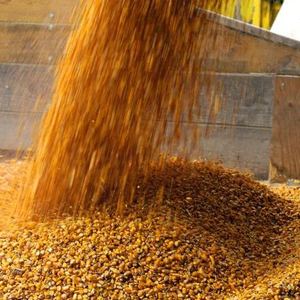WASDE: Corn supplies down, ethanol use up

January 12, 2017
BY Susanne Retka Schill
USDA ratcheted down corn supplies for the 2016-’17 crop year, lowering corn ending stocks by 48 million bushels from last month’s World Agriculture Supply and Demand report. The adjustment was based on lower production, reduced feed use, increased ethanol use and smaller stocks.
Corn production is estimated at 15.148 billion bushels, down 78 million from last month on lower harvested area and a reduction in yield to 174.6 bushels per acre. Imports are raised based on the pace of corn imports through November. Feed and residual use is lowered 50 million bushels to 5,600 million based on the smaller crop, increased corn used to produce ethanol, greater sorghum feeding, and indicated disappearance during September-November as reflected by the Dec. 1 stocks.
Corn used to produce ethanol is raised 25 million bushels to 5,325 million based on the most recent data from the Grain Crushings and Co-Products Production report, which estimated the amount of corn used to produce ethanol during September-November to be a record high. The projected range for the season-average corn price received by producers is raised 5 cents on both ends to $3.10 to $3.70 per bushel.
Advertisement
Advertisement
Sorghum production for 2016-’17 is estimated 18 million bushels higher on increases in both harvested area and yield. Grain sorghum prices are projected to average $2.65 to $3.15 per bushel, down 15 cents at the midpoint reflecting the weakening relationship to corn prices in interior markets.
Global coarse grain production for 2016-’17 is forecast 1.7 million tons lower to 1,327.7 million. This month’s 2016-’17 foreign coarse grain outlook is for marginally lower production, higher consumption, and increased trade relative to last month. Serbia corn production is raised reflecting the latest information from the Foreign Agricultural Service office in Belgrade. Partly offsetting is lower corn production for Bolivia where the impact of a severe drought during the growing season was worse than previously expected.
Major global trade changes for 2016-’17 this month include lower projected corn exports for India, more than offset by increases for Serbia and the EU. Imports are raised for Bolivia, but lowered for Indonesia. Foreign corn ending stocks are virtually unchanged from last month, with reductions for Indonesia, Mexico, and the EU offset by an increase for Canada.
With strong soybean prospects expected to raise the competition for acreage this year, the WASDE report also adjust soybean supplies down by 60 million bushels. With exports and crush unchanged, ending soybean stocks are projected at 420 million bushels, down 60 million from last month. Although soybean crush is unchanged, soybean meal production is reduced on a lower extraction rate. Soybean meal exports are also reduced on lagging sales. Soybean oil balance sheet changes include increased production on a higher extraction rate, and increased ending stocks.
Advertisement
Advertisement
The 2016-’17 U.S. season-average farm price forecast for soybeans is projected at $9.00 to $10.00 per bushel, from $8.70 to $10.20, up 5 cents at the midpoint. The soybean meal price forecast is unchanged at $305 to $345 per short ton.
Related Stories
The USDA significantly increased its estimate for 2025-’26 soybean oil use in biofuel production in its latest World Agricultural Supply and Demand Estimates report, released July 11. The outlook for soybean production was revised down.
U.S. fuel ethanol capacity fell slightly in April, while biodiesel and renewable diesel capacity held steady, according to data released by the U.S. EIA on June 30. Feedstock consumption was down when compared to the previous month.
The U.S. EPA on July 8 hosted virtual public hearing to gather input on the agency’s recently released proposed rule to set 2026 and 2027 RFS RVOs. Members of the biofuel industry were among those to offer testimony during the event.
The USDA’s Risk Management Agency is implementing multiple changes to the Camelina pilot insurance program for the 2026 and succeeding crop years. The changes will expand coverage options and provide greater flexibility for producers.
The USDA’s National Agricultural Statistics Service on June 30 released its annual Acreage report, estimating that 83.4 million acres of soybeans have been planted in the U.S. this year, down 4% when compared to 2024.
Upcoming Events










